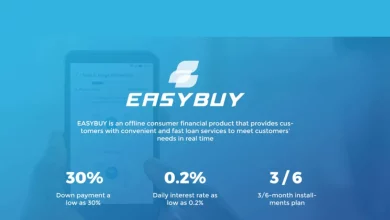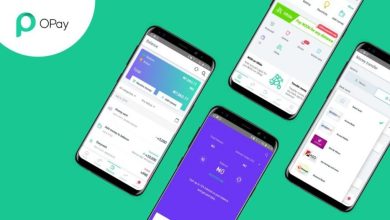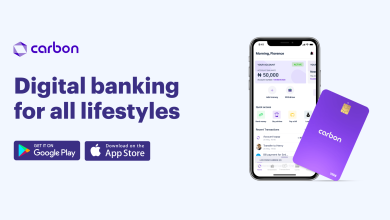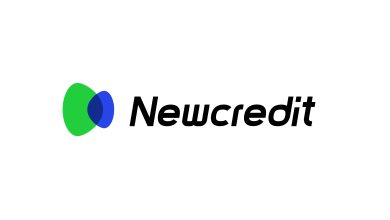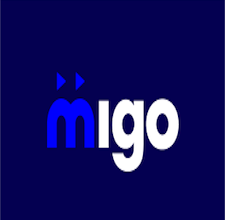Kuda vs Palmpay: Which is better?
Mobile online banking is currently a popular subject in Nigeria, with various competitors in the financial market. Fintech firms, such as Kuda and Palmpay, have established themselves as strong and reliable players in the banking industry.
In this context, we will compare Kuda and Palmpay to determine which one is a better option for business owners, vendors, and others. Both companies have gained significant recognition in the Nigerian financial industry and play vital roles in providing financial services to Nigeria. Despite facing competition from other similar firms, they continue to offer some of the best services available.
These online banking apps have been instrumental in facilitating transactions between buyers and sellers, particularly during Nigeria’s cashless policy era. They provided a viable alternative when traditional banks faced disruptions earlier this year. However, it’s important to note that neither app is flawless, and users will have their preferences when deciding which one to use.
Kuda Vs Palmpay
The following is a detailed analysis comparing Palmplay and Opay to determine the best choice for users.
When it comes to user downloads, Kuda has amassed over 8 million downloads on both the Apple App Store and Google Play Store. It has received 234,000 reviews and maintains an average rating of 4.6. On the other hand, Palmpay has 10 million downloads, surpassing Kuda’s number of downloads, and a total of 266,000 reviews, with an average rating of 4.35.
Software Usability
For efficient utilization of either of these apps, a smartphone with a minimum of 2GB RAM is required. Having less than 2GB RAM may result in a disrupted user experience.
Both Kuda and Palmpay offer excellent user usability. They have a smooth registration and sign-in process, with minimal to no lag within the app. Additionally, both apps provide superb transfer speed.
However, it’s important to note that users may encounter errors on the app when their internet connection is disabled. Apart from that specific scenario, occasional network troubles can occur while conducting transactions on either app. These issues may cause delays in deposits and bill payments.
Features
Both apps have identical features, but recently Palmplay has introduced some noteworthy additions. These new features include Recharge2cash and the split bill feature. Both of these additions are highly appreciated by users, with the Recharge2cash feature being particularly popular. It allows users to convert excess airtime into cash, providing a useful solution for those with overloaded airtime balances.
Palmpay offers a wide range of features, but it is worth mentioning that Kuda is also well-regarded for its feature offerings. Kuda stands out by providing businesses with a reliable payment solution, instant loan financing, investment options, savings features, and both virtual and physical card capabilities. These diverse features make Kuda a notable player in the market.
Lending
Many users have been curious about whether they can borrow money from the Kuda banking app. The answer is yes, but there is a requirement that users must be actively transacting on the app to be eligible for borrowing. Kuda has implemented a flexible lending system and offers eligible users an overdraft facility.
When borrowing money from Kuda, there is a daily interest rate of 0.3% until the repayment is made. It’s important to note that, unlike some other loan apps, Kuda does not engage in harassment, intimidation, or embarrassment if there are any defaults in repayment. Kuda strives to maintain a respectful and supportive approach when it comes to loan repayment.
While Palmpay has an integrated financial service called “Flexi Credit” within its app, allowing users to borrow money and repay it according to a predetermined schedule. However, it’s worth noting that one drawback of this lending system is that if you stop using the Palmpay app for a certain period, you will no longer be eligible to apply for a loan.
Fees
Kuda provides users with 25 free transfers per month to other banks. After exhausting the free transfer limit, users will be charged ₦10 for transfers below ₦10,000, and ₦50 for transfers exceeding ₦10,000.
In the case of Palmplay, transfers are initially free for the first three transactions. However, starting from the fourth transfer, a fee of ₦10 will be charged for transfers to third-party banks. Additionally, transfers to other mobile money platforms will incur a fee of 0.9% of the transaction amount.
Savings
The Kuda banking app provides users with a range of robust saving methods, which include the following options: Save as You Want, Save Frequently, Spend+Save, and Fixed Deposit. These features enable users to adopt various saving strategies and effectively manage their finances within the Kuda app. Unlike Kuda, Palmpay does not offer any savings options to its users. The app does not provide features or tools specifically designed for saving purposes.
Security
Both Kuda and Palmpay prioritize security and adhere to the Payment Card Industry Data Security Standard (PCI DSS) to ensure the protection of user funds. They continuously work to implement robust security measures and safeguards.
As a user, it is crucial to treat your mobile banking application PIN as confidential information that should only be known to you. This helps maintain the security of your account and funds.
Both Kuda and Palmpay are insured by the Nigerian Deposit Insurance Corporation (NDIC), further ensuring the safety and security of users’ funds. They take extensive measures to safeguard user deposits and provide peace of mind to their customers.
Similarities
The differences between the two platforms are minimal. Both Kuda and Palmpay can be accessed through mobile applications. Users can deposit cash through the nationwide merchant networks of both platforms. They also enable users to send and receive money, utilizing online banking for seamless transfers. Additionally, both apps provide access to their respective lending financial systems. Overall, the features and functionalities of Kuda and Palmpay align closely with each other.
Advantages
Kuda
- Secure and Seamless banking experience.
- No To zero lag or bugs on the app
- Flexible and simple user interface.
- User can enjoy free 25 transfers quarterly
- Swift transactions, Perfect for business owners and vendors.
Palmpay
- Seamless banking experience
- User gets free 3 transfers daily.
- Transactions don’t take forever before it is been received by the recipient.
- User can access a Palmpay-enabled POS device by requesting one.
- Users can convert overloaded airtime into cash
- User can spill bills with Palmpay users
- Just like Opay, it also has Cashback and Bonus features.
Disadvantages
Kuda, Like Opay, Kuda doesn’t have bonuses and cashback features.
- There is a glitch in its referral system, which make it unstable at times.
- To be eligible for a loan, it takes strenuous efforts, because one must be active on the app, and must be known to be transacting with large funds on the app.
- It doesn’t have a USSD banking Code.
Palmpay
- On Palmpay loans takes a lengthy period, for one to be eligible., Unlike Opay, It doesn’t have USSD banking.
- It also has occasional network troubles
- Users can’t access or request virtual or physical debit cards.
Kuda vs Palmpay: which is better?
Both mobile banking apps are great, in determining which is the best; recall we said Kuda and Palmpay have similar banking features, But there are some slight differences between the duo, for instances palmpay has cashback and bonus features over Kuda, Kuda provides access to physical and virtual Naira cards while palmpay doesn’t, in terms of financial lending palmpay’s process is simple, while kuda’s own is complicated. While Palmpay users get free 3 transfers daily, Kuda gives its users 25 free transfers monthly, Kuda is known for its responsive customer support, while Palmpay Customer support isn’t that responsive.
The fact that Palmpay has cashback and rewards features doesn’t make it, stand out against Kuda, Kuda has better customer support, which responds to its user ticket tickets swiftly, while Palmpay doesn’t, If Other features carry 3 points, this should have 5 points, because communication is very important, in the event you encounter any issue while transacting. I could remember a time I bought energy units from Kuda, and I didn’t receive my token on the app, I have to message them on their Twitter handle, and lay my complaint, within an hour or so, my token was sent me, if this was palmpay, it would take forever before one would get a response.
F.A.Q
Is Kuda available in other countries apart from Nigeria?
No, currently Kuda is only available for users in Nigeria.
Can I use Palmplay to transfer money internationally?
No, Palmplay is primarily focused on domestic transfers within Nigeria.
Are there any fees for using Kuda’s savings features?
No, Kuda’s savings features are free to use for account holders.
Can I withdraw cash from my Palmplay account?
Yes, Palmplay allows users to withdraw cash from their accounts through authorized agents and partner banks.
What are the maximum loan amounts offered by Kuda?
The maximum loan amount available through Kuda’s lending system varies based on individual eligibility and credit assessment.
Conclusion
Both Kuda and Palmplay offer convenient mobile banking solutions to users in Nigeria. They provide similar features such as fund transfers, mobile payments, and access to their respective lending systems. While Kuda stands out with its comprehensive savings options and business payment solutions, Palmplay differentiates itself with features like Recharge2cash and split bill functionality. Users need to consider factors such as fee structures, available services, and user experience to determine which app aligns better with their specific needs.




